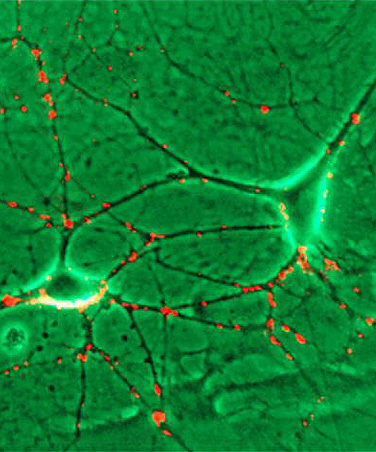225 Stories to Celebrate: How Do Memories Get Made?
 Anything—grandma’s fresh cookies or the scent of an ex-lover’s perfume—can trigger a memory, but Pitt neuroscientists want to discover precisely how memories get made.
Anything—grandma’s fresh cookies or the scent of an ex-lover’s perfume—can trigger a memory, but Pitt neuroscientists want to discover precisely how memories get made.
Professor Guoqiang Bi and his research team study neural activity. They’ve found that processing information strengthens synapses, which permit neurons to pass electrical signals.
Stronger synapses mean stronger electrical signals, which mean stronger connections. The stronger the connection, the more the information “stays,” creating memories.
But how does the brain choose what stimulus to process as information?
Daniel J. Simons hopes to answer that question. The neurobiology professor and his team investigate neuronal integration within small neural networks that process sensory information. Knowing how that mechanism works could help scientists to enhance it.
For more stories about Pitt's legacy of achievement or to share your own stories about the University, visit www.225.pitt.edu.
Other Stories From This Issue
On the Freedom Road

Follow a group of Pitt students on the Returning to the Roots of Civil Rights bus tour, a nine-day, 2,300-mile journey crisscrossing five states.
Day 1: The Awakening
Day 2: Deep Impressions
Day 3: Music, Montgomery, and More
Day 4: Looking Back, Looking Forward
Day 5: Learning to Remember
Day 6: The Mountaintop
Day 7: Slavery and Beyond
Day 8: Lessons to Bring Home
Day 9: Final Lessons

